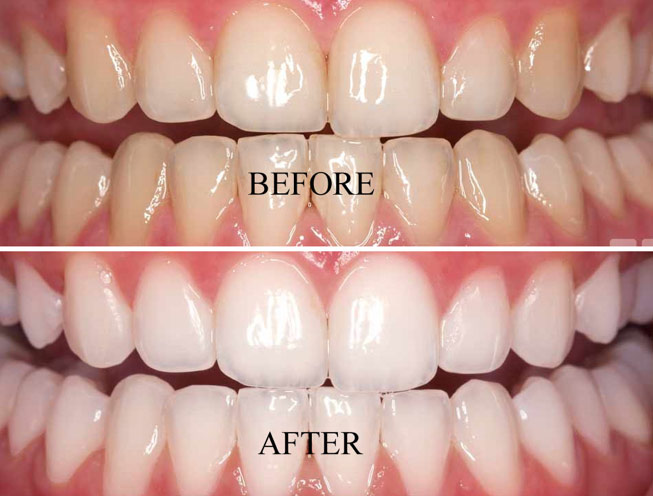
Teeth whitening is a cosmetic dental procedure aimed at lightening the color of your teeth and removing stains and discoloration. There are several methods for whitening your teeth, both professional and at-home options. Here are a few popular ones:
Professional Teeth Whitening:
- In-Office Whitening (Bleaching):
Dentists use stronger bleaching agents, often combined with special light or laser treatments, to whiten teeth. This method can show results in a single session. - Custom Tray Whitening:
Your dentist creates custom trays that fit your mouth. You fill the trays with a whitening gel and wear them for a specified time at home. This is more gradual compared to in-office treatments.
At-Home Teeth Whitening:
- Whitening Toothpastes:
These contain mild abrasives and chemical agents to remove surface stains. They don’t change the natural color of your teeth but can help with removing stains. - Whitening Strips or Gels:
Over-the-counter whitening strips or gels with peroxide can be applied to teeth. They are generally worn for a short period each day, over a week or two, to achieve noticeable results. - Whitening Pens:
These are portable and easy to use. You apply a whitening gel directly onto your teeth, usually with a pen-like applicator. - Natural Remedies:
Some people use natural remedies like baking soda, activated charcoal, or oil pulling (swishing coconut oil) to brighten teeth. However, these methods don’t provide dramatic results and can be abrasive or ineffective over time.
Things to Keep in Mind:
- Sensitivity: Whitening treatments can make your teeth sensitive. If you experience discomfort, you may want to reduce treatment frequency or try a gentler product.
- Results: The outcome varies depending on the method used and the natural color of your teeth. Stubborn stains (like those from smoking or coffee) may need professional intervention.
- Maintaining Results: To keep your teeth white, avoid stain-causing foods (coffee, tea, red wine) and practice good oral hygiene.
